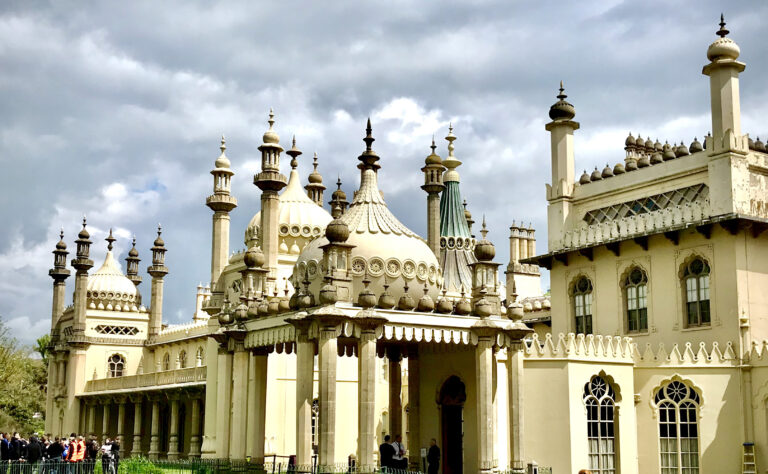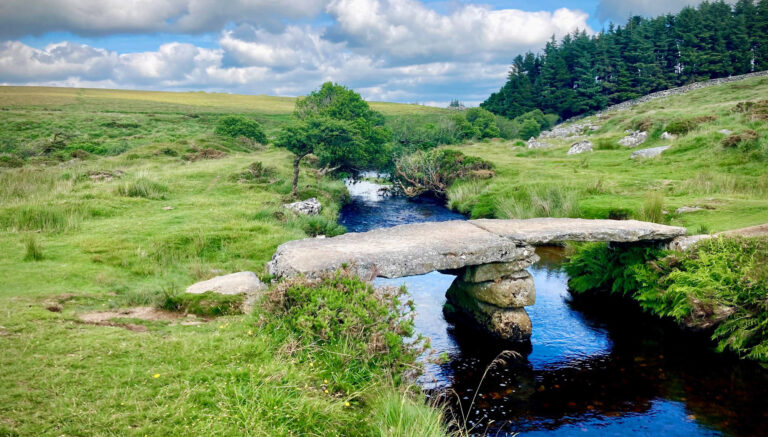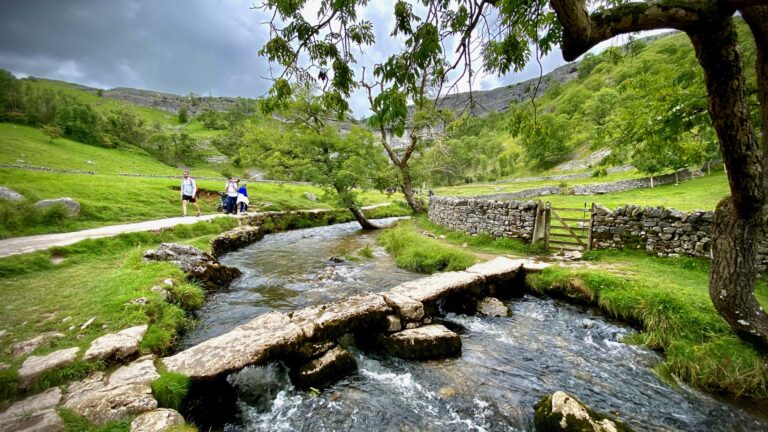A Journey Through Time: Things to Do in York
Delving into York: A Glimpse into Its Past
York, a city brimming with historical allure, stands as a testament to England’s rich history and beckons travellers and historians alike. Nestled in North Yorkshire, England, this city is a vibrant tapestry woven with tales from its Roman roots, Viking invasions, and medieval prominence. A blend of ancient walls, iconic landmarks, and winding streets, this city offers a fascinating journey through time. But what makes York so unique, and why has it remained a focal point through the annals of time?

The River Ouse flows through the city and a leisurely cruise along the river is a fabulous way to take in the sights and get your bearings.
Back on land, the city’s history is written in its streets.
Narrow streets such as High and Low Petergate link crocked squares and other areas such as Micklegate and St Saviourgate exude Georgian grace.
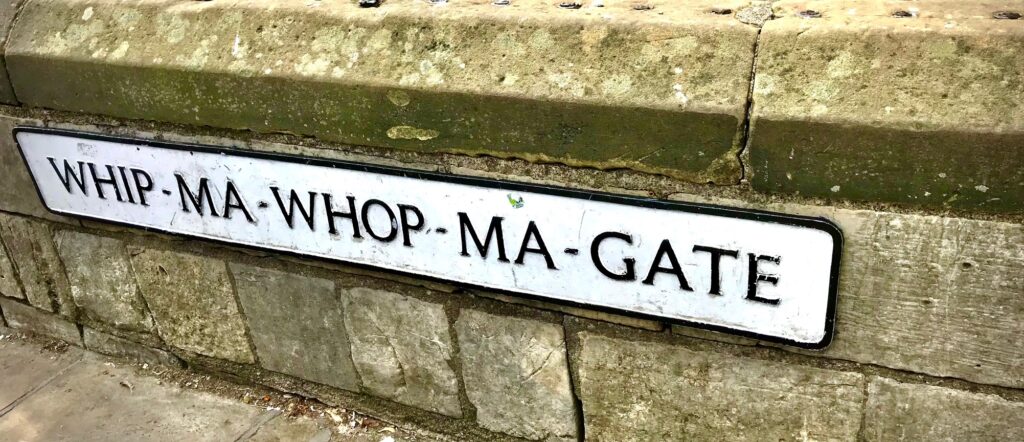
Peculiar names for some of the streets, such as Whip-Ma-Whop-Ma-Gate, will catch you by surprise.
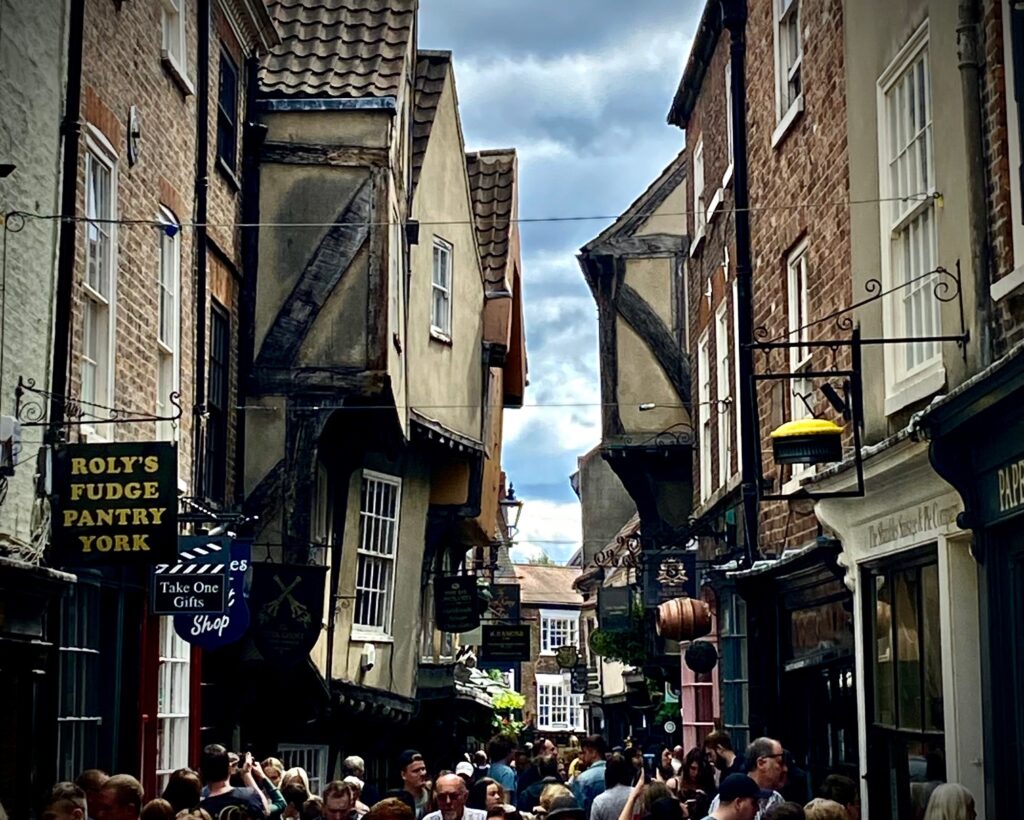
Check out the quirky streets and particularly the Shambles (voted the best street in Britain) which is said to be the inspiration for Diagon Alley in the Harry Potter novels and this is apparent by the themed shops prevalent within this strange congested pedestrianised road.
You can check out York’s amazing history at the Jorvic Viking Museum, the Yorkshire Museum or the excellent York Castle Museum.
The York Chocolate story is great if you are travelling with kids and ends with a chance to make your own Chocolate lollipop.
Where is York?
The heart of the Northeast is the broad, lowland corridor which carries the main rail and road routes from London and the Midlands through to the Scottish border.
York is the great city of this lowland country and stands on a site between two rivers. The Romans had chosen it as a place which could be easily defended. We were in York for an entirely different reason.
Having calculated that it had been 45 years since I was here last, comparisons were difficult, but I figured that nothing had changed.
We arrived on a Wednesday. We had the intention to see the Minster, The Shambles, The Castle, the Museum and finish at the National Rail Museum. I had long since been interested in Vikings but that’s not to say that the Yorvick Centre should be dismissed!
Staying Near York
Having parked our Motor home in Ancaster Malbis at the Popular Caravan Park, in a wonderful position next to the River Ouse, it was tempting to just laze the day away watching the motor boats pottering.
It was also tempting to pick up the bus from the road just outside where we were staying. York is very pro public transport and there is an amazing network of cheap buses running across the whole area. But we were travelling with friends who had a car and we had a plan to park in the National Rail Museum for ten pounds a day.
Parking in York
We ended up parked next to the River Ouse, in exceptionally tight spaces, very thankful that we had left the Motorhome outside of the city. The Rail Museum was being enlarged, the road was being moved and the carpark we had planned was full of diggers!
£15 seemed a bit steep for five hours of parking but we were very central.
See our Comprehensive guide to ‘Parking in York’ later in this article
A Snapshot of York
Located at the confluence of the Rivers Ouse and Foss, York has been a significant urban centre for over two millennia. Today, it stands as a fusion of ancient landmarks and modern amenities, presenting a harmonious blend of the past and present.
York’s Historical Journey
Roman Foundations
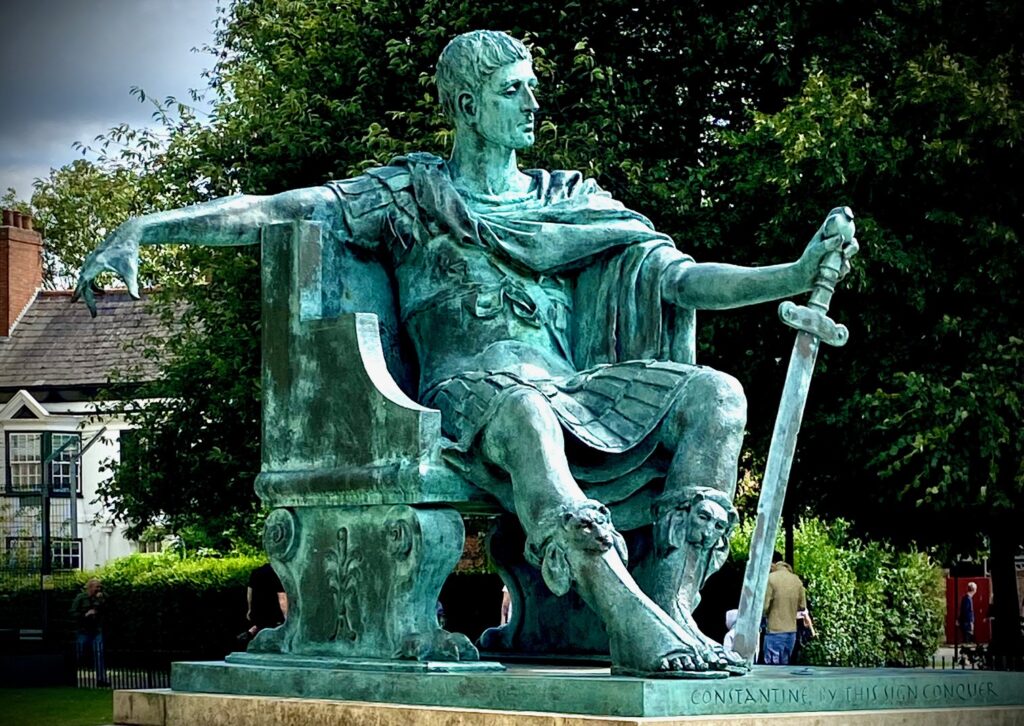
York’s origin traces back to 71 AD when the Romans established a fort named ‘Eboracum’. It quickly grew in stature, becoming one of the major Roman towns in Northern England. Notably, it was here that Constantine the Great was proclaimed Emperor in 306 AD.
Viking Footprints
In the 9th century, Vikings, attracted by York’s strategic location, invaded and renamed it ‘Jorvik’. This era saw York transform into a major river port, marking its significance in Northern Europe’s trade routes. The Jorvik Viking Centre today offers insights into this crucial chapter of York’s history.
Medieval Era and Beyond
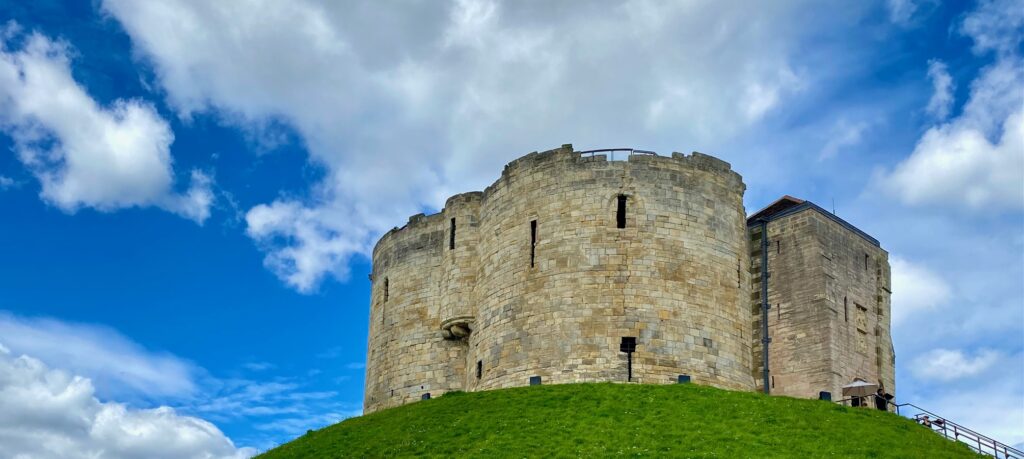
Following the Norman Conquest in 1066, York expanded its boundaries and built iconic structures like York Minster and York Castle. The medieval era witnessed the city’s growth as a trading hub, with its intricate network of ‘Snickelways’ and the famed Shambles.
In subsequent centuries, York transitioned from a primarily trade-driven town to a centre for the railways during the 19th century. Despite facing challenges like the decline of traditional industries, York has continually adapted, ensuring its position as an essential cultural and economic hub in the region.
Why York Captivates Today
For those searching for ‘Things to do in York’, history stands as its foremost allure. Its landmarks act as time capsules, offering glimpses into the epochs gone by. The city’s vibrant festivals, like the York Mystery Plays and the Viking Festival, further showcase its rich heritage.
However, it’s not just the past that makes York intriguing. Its bustling cafes, renowned educational institutions like the University of York, and thriving arts scene make it a modern city firmly rooted in its history
York’s essence lies in its ability to seamlessly blend its millennia-old history with the vibrancy of today. For visitors, historians, or anyone keen on understanding England’s rich tapestry, York stands as an invaluable chapter, waiting to be explored.
Explore the Historic Charm of York
Nestled in the heart of North Yorkshire, York stands as a testament to England’s rich history. A blend of ancient walls, iconic landmarks, and winding streets, this city offers a fascinating journey through time. For visitors seeking to unearth England’s historic gems, York is a must-visit destination.
Why Visit York?
Steeped in history, York unveils a tapestry of Roman, Viking, and medieval heritage. It’s not just a city of the past; its modern amenities and cultural events make it a vibrant spot for all ages. Whether you’re an avid historian, a family on vacation, or simply looking for a unique getaway, there’s something for everyone here.
When to Visit?
York showcases distinct beauty throughout the year. However, spring and early summer provide a pleasant climate, making it ideal for outdoor exploration. That being said, always be prepared for the occasional rain, typical of British weather.
Things to Do in York
York Minster

At the heart of the city lies York Minster, a Gothic cathedral that’s nothing short of awe-inspiring. Renowned for its stained glass windows and intricate architecture, this cathedral offers visitors a chance to delve deep into religious and architectural history.
There are many small old churches in York, small and glorious but nothing quite prepares you for your first close-up view of York Minster. The Largest Medieval Gothic Cathedral in Northern Europe. Visible for miles around, it took two hundred years to complete this prayer set in stone. On the inside, the light streaming into the building via the treasured windows is like being inside a kaleidoscope.
Unless you are a York resident or student studying in York it’s going to cost you to get in, with the cathedral open daily. Catch a guided tour, ascend the tower for the best views over the city or enter for free if you want to see the Undercroft Museum or light a candle.
York Minster Fire – 1984: From Destruction to Restoration
The Night of the Blaze
In July 1984, York Minster, a cornerstone of York’s historical landscape, faced a severe test: a fire believed to have been ignited by a lightning strike. The south transept bore the brunt of the damage, with the iconic Rose window suffering heat distress.
The Restoration Challenge
The aftermath revealed repair costs estimated at around £2.25 million. Over the next four years, a determined community, supported by national efforts, rallied to restore the cathedral. Today, while the Minster showcases its age-old beauty, it’s also equipped with modern fire prevention systems, ensuring its safeguarding for future generations.
York Minster in the Present
For those considering ‘Things to do in York,’ York Minster stands not just as a marvel of architectural prowess but as a symbol of resilience. The 1984 fire and its ensuing restoration are integral to its enduring tale of triumph over adversity.
York Minster Renovations
The building is constantly in a state of renovation. Apparently, the building costs £30,000 a day to keep upright, and the busy Stone Masons can be seen at work in a fenced-off area to the side of the building, trying to keep pace with the decay slowly eroding the majestic building.

All this history aside, as you approach York Minster take a moment to notice the statue of Queen Elizabeth II on the front facade, by the great west door. Five years in planning and creation it had been intended as a Platinum Jubilee celebration, but by the time it was unveiled, it was unveiled by the King in her memory overlooking Queen Elizabeth Square.
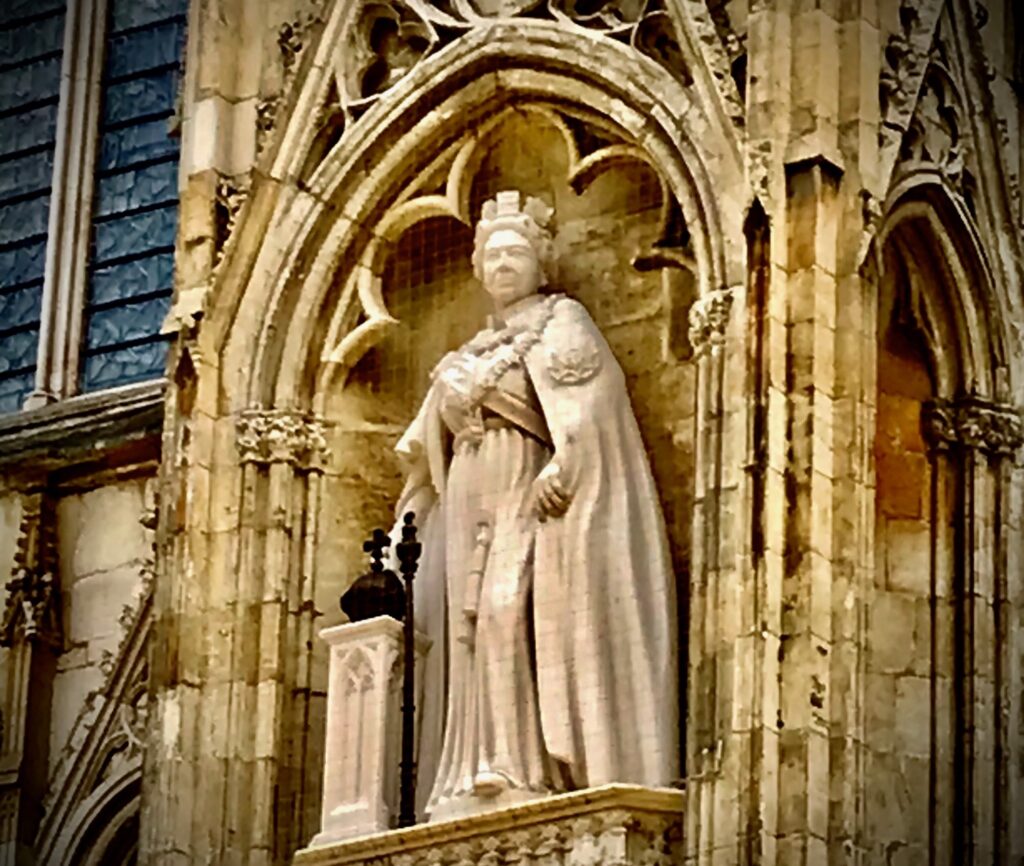
York Castle Museum
A step into the York Castle Museum is a step back in time. Here, the past comes alive with displays of historic artefacts, ranging from daily life items to wartime memories. It provides a tangible connection to the stories that have shaped York.
The Castle Museum is large and imposing. You can’t miss it when you visit the castle. Here you will find the ‘York Sign’ the type of tourist activity seen the world over to allow you to bookmark your travels with a sign to remind you where you are. I wonder if it is the student population or the fact that rather than the standard huge robust plastic lettering, this version has been made from a Privet substitute, necessitating a fence to keep the marauding masses off.
As a result, it doesn’t work. The Mary Poppins esq carousel however is gorgeous.
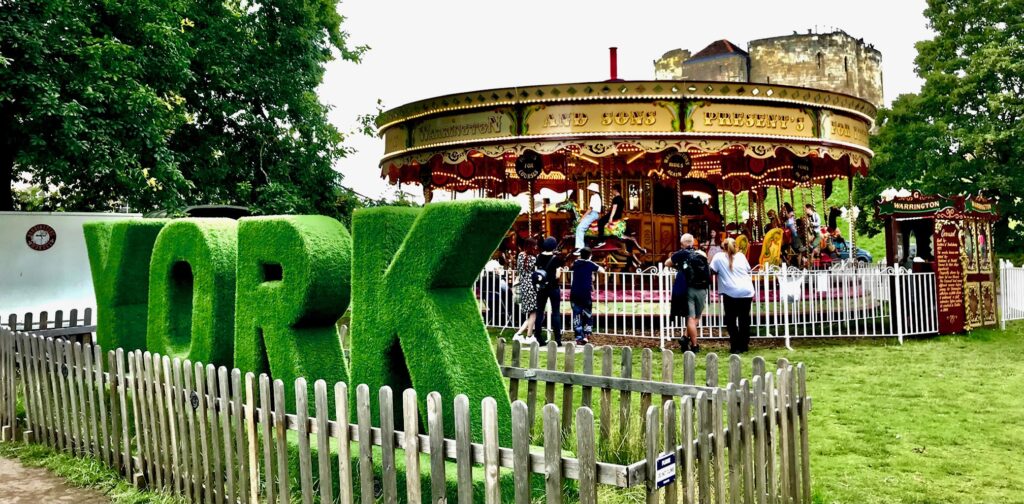
The museum brings alive bygone days. In Kirkgate, you can relive a Victorian time when York was a mass of cobbled streets and inviting bow-shaped shopfronts. A historic collection of old Penny arcade machines have now been somewhat updated to take 20p, 50p and £1 coins.
Other varied exhibitions (including some temporary/changing) from corsets to Christmas will keep you engaged for hours and is a brilliant way of dealing with inclement weather need for entertaining the kids
York City Walls
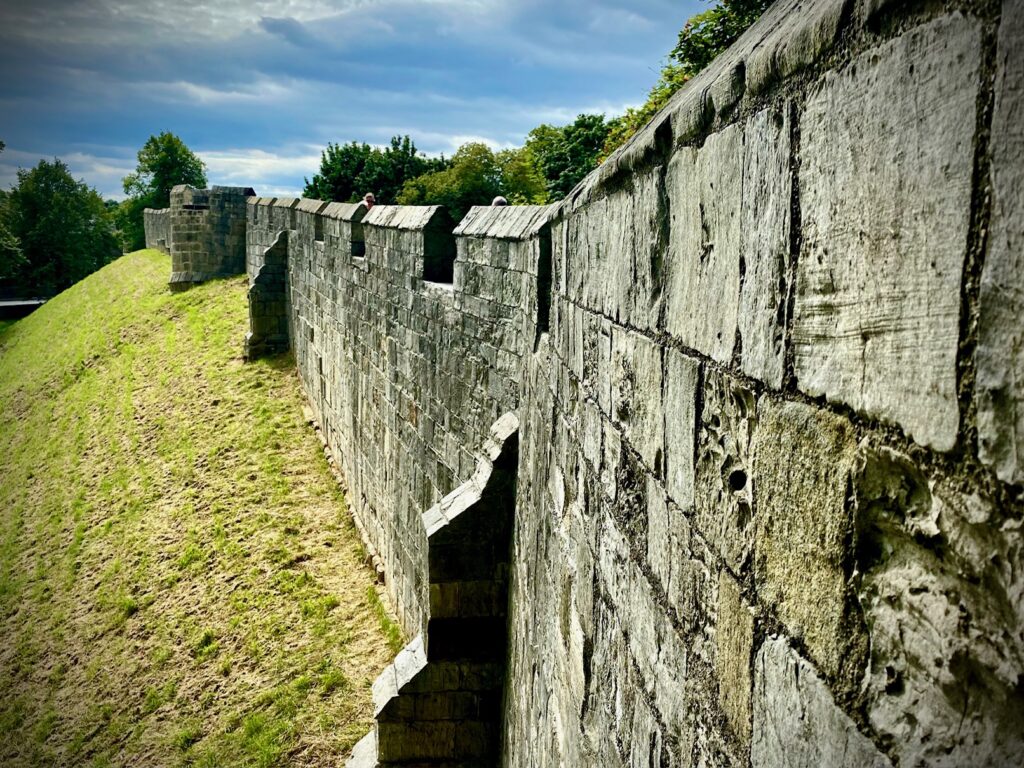
An iconic representation of York’s medieval era, the York City Walls stretch for over three kilometres. Walking along these walls offers panoramic views of the city and a unique perspective of its historic layout.
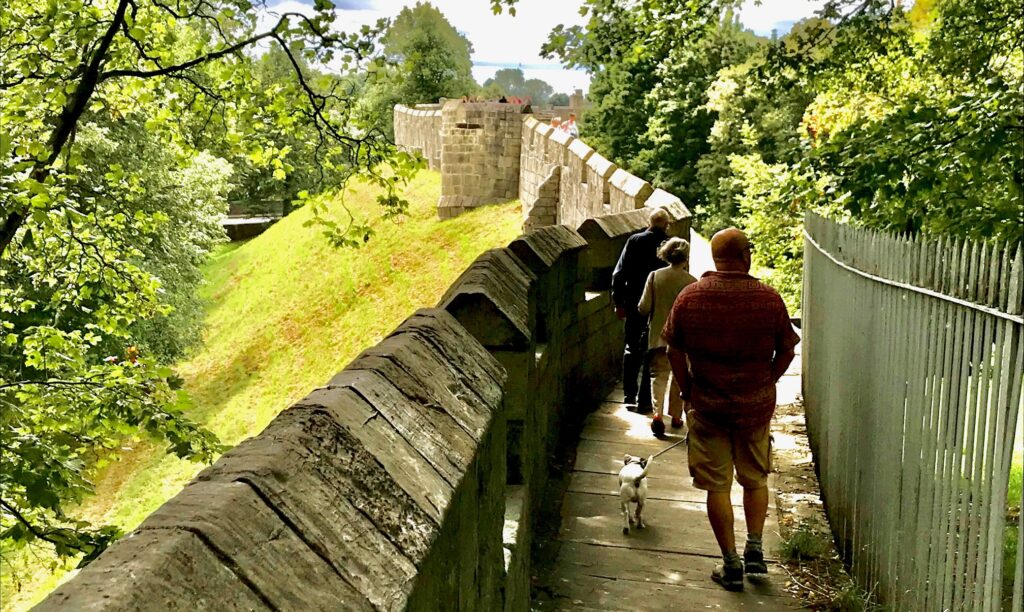
This free-to-do activity gives you a Bird’s Eye view over the city. Once you have negotiated the steps up you’ll also find it a slightly easier more direct walk, depending on where you are aiming for.
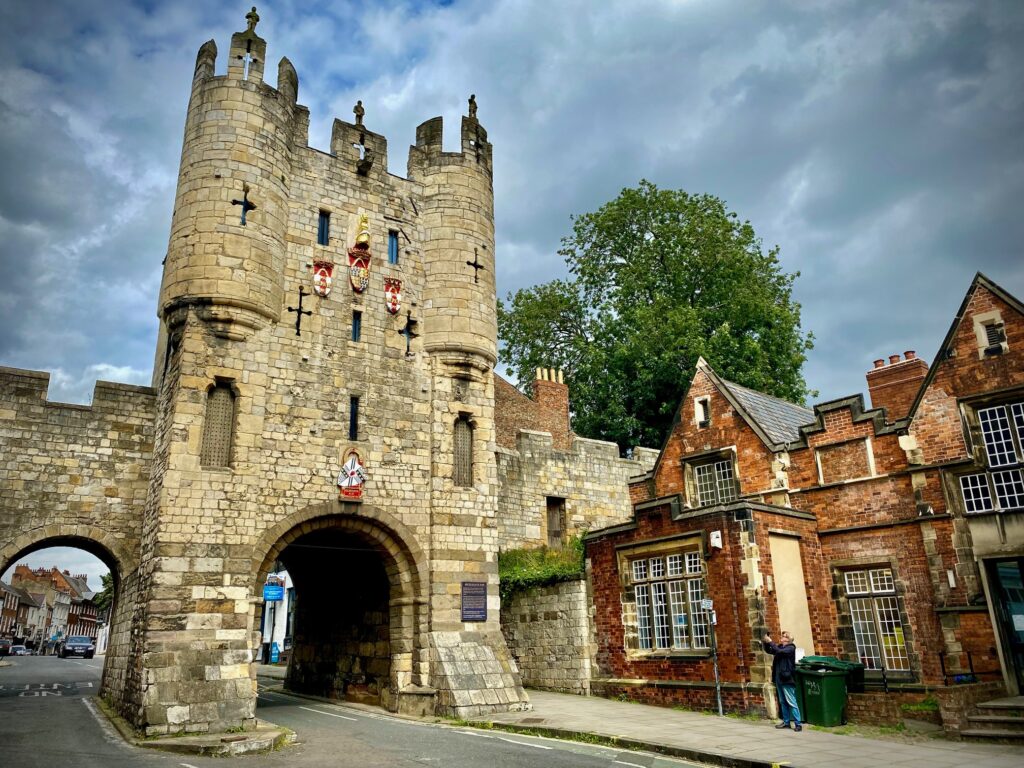
Four bars, or gates erected in the Middle Ages lead in through the Roman walls that encircle the old city for around 3 miles. The longest city walls in England, you can walk them for free via the ‘Rampart Walk’ as mostly they remain intact.
York Castle

Standing as a symbol of York’s turbulent past, York Castle has witnessed countless events – from royal affairs to infamous imprisonments. Today, it stands as a reminder of the city’s strategic importance over centuries.
Jorvik Viking Centre
Venture into the world of Vikings at the Jorvik Viking Centre. This immersive experience, built on the very grounds where archaeologists discovered Viking remains, offers a vivid glimpse into the lives of these Norse settlers.
York Dungeons
For those seeking a mix of history and thrill, the York Dungeons await. Here, the darker aspects of York’s past come alive through interactive shows and chilling tales.
The Shambles
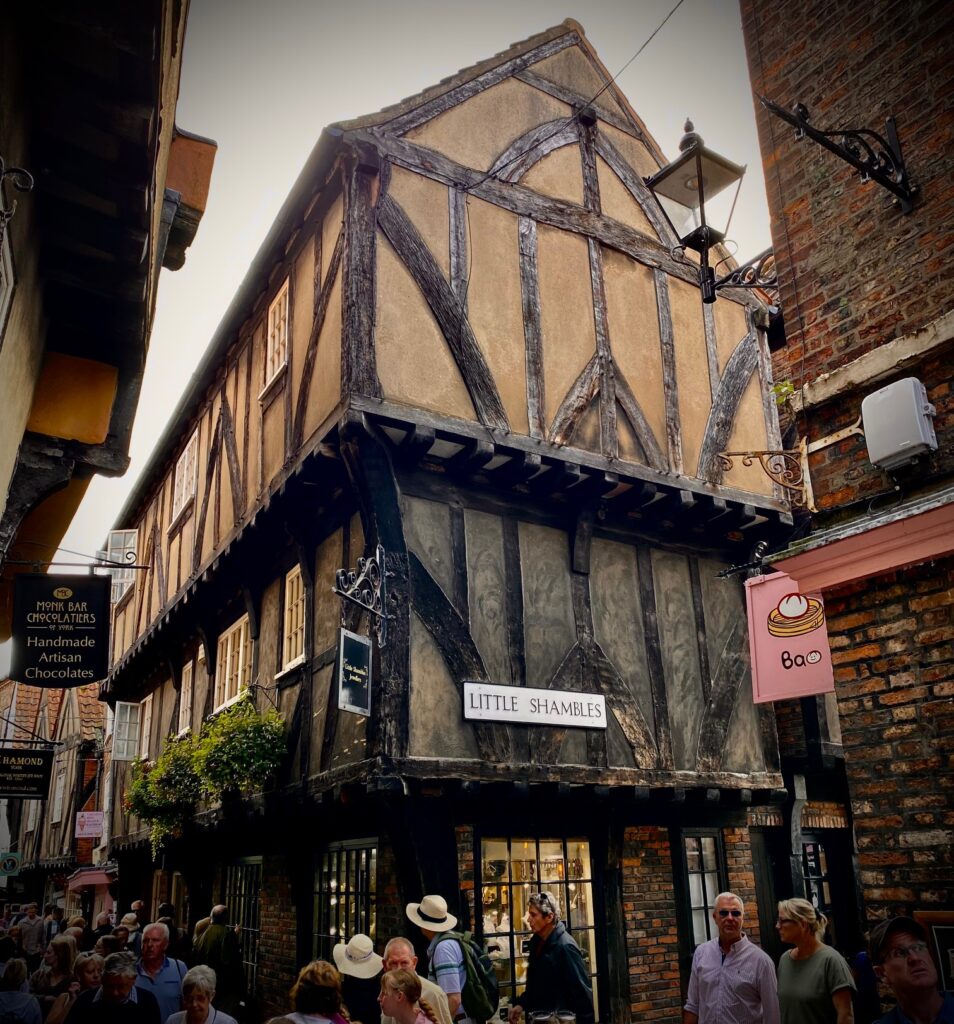
No visit to York is complete without a stroll down The Shambles. This historic street, with its overhanging timber-framed buildings, transports visitors to a bygone era. Today, it’s lined with charming shops, eateries, and boutiques.
Conclusion
With a rich tapestry of history, iconic landmarks, and a welcoming atmosphere, York beckons travellers from all corners. For those pondering over the question of ‘Things to do in York’, the answer lies in its streets, walls, and stories waiting to be discovered. Plan your visit, and let York unveil its magic to you.
Your Guide to the York Railway Museum

The National Railway Museum York
There’s a certain smell. It may be grease. It may be Steam engines. But it hits you the moment you arrive. It’s not unpleasant. Its smells of History.
If you or your kids are in any way interested in trains then here is a place to while away a few hours. There’s a cafe and lots of room for the kids to run amock – a little – let’s not go upsetting the train spotters. I loved this place as a child and as an adult, it still retains a certain charm. Getting up close and personal, underneath (and in the case of the bullet train, inside) is wonderful. They have got the whole suite of famous trains here from “The Rocket” to the world speed breaking ‘Mallard’
National Railway Museum in York
York is home to many historical attractions, and the National Railway Museum stands out as one of its crown jewels. Catering to both railway enthusiasts and curious visitors, this museum offers an in-depth look at the evolution of rail transport in the UK.
What is the York Railway Museum?
The National Railway Museum in York is a dedicated space that captures the essence and history of rail transport in Britain. It’s part of the Science Museum Group and offers an impressive collection of iconic locomotives, carriages, and railway memorabilia.
Attractions at the National Railroad Museum

Iconic Locomotives
At the heart of the museum’s attractions are its historic locomotives. Some of the most notable engines you can see include:
- Flying Scotsman: Known for being the first locomotive to officially reach 100 mph.
- Mallard: Holding the record as the world’s fastest steam locomotive.
- Shinkansen Bullet Train: A Series 0 Japanese bullet train, highlighting global railway innovations.
Interactive Displays
Beyond the static displays, the museum offers several interactive areas. These include:
- Station Hall: Experience the atmosphere of a bygone railway era, complete with historic platforms and carriages.
- Railway Workshops: A chance to see how locomotives and carriages are maintained and restored.
- Learning Zones: Perfect for younger visitors, these areas provide hands-on experiences and insights into the world of trains.
Practical Information
Parking York Railway Museum
While there is no on-site parking dedicated exclusively to the museum, several city car parks are within walking distance. Visitors are encouraged to use York’s excellent park-and-ride system or public transport to reduce congestion.
York Railway Museum Tickets
One of the museum’s standout features is that it offers free admission to all its visitors. While entry is free, donations are appreciated, as they help maintain the museum and its collections. You can book your York Railway Museum Tickets online for your required day and time here

York Railway Museum Opening Times
The National Railway Museum of York is open seven days a week, 10.00–17.00.
The last admission is at 16.30 Dogs however are not welcomed but the staff were exceptionally helpful as we ‘swapped shifts’ on the wooden benches with the dog water bowls provided.
Exceptional Yorkshire kindness is of a standard which would seem alien to any Londoner.
The fact that we were able to take a taxi from the rank at York Station which is just a ten-minute walk from the Rail museum is something which would never happen in London or Brighton. In both these cities, you would have to endure a long narrative about waiting times, and walking distances before they told you ‘No’.
Yorkshire hospitality is famous and here, where due regard given to all and particularly our kids and seniors is given freely, will make any trip to York one which will make any trip even more memorable.
National Railway Museum York- Duration of Visit
On average, visitors spend around 2-4 hours exploring the vast collections and displays. However, those with a keen interest in railways might find themselves immersed for the entire day.
Conclusion
The National Railway Museum in York is more than just a collection of trains. It’s a journey through time, showcasing the marvels of engineering, the spirit of innovation, and the role of railways in shaping modern society. Whether you’re a train enthusiast or simply curious, a visit here promises an enriching experience. Don’t miss out on this iconic attraction when in York!
Parking in York: A Comprehensive Guide
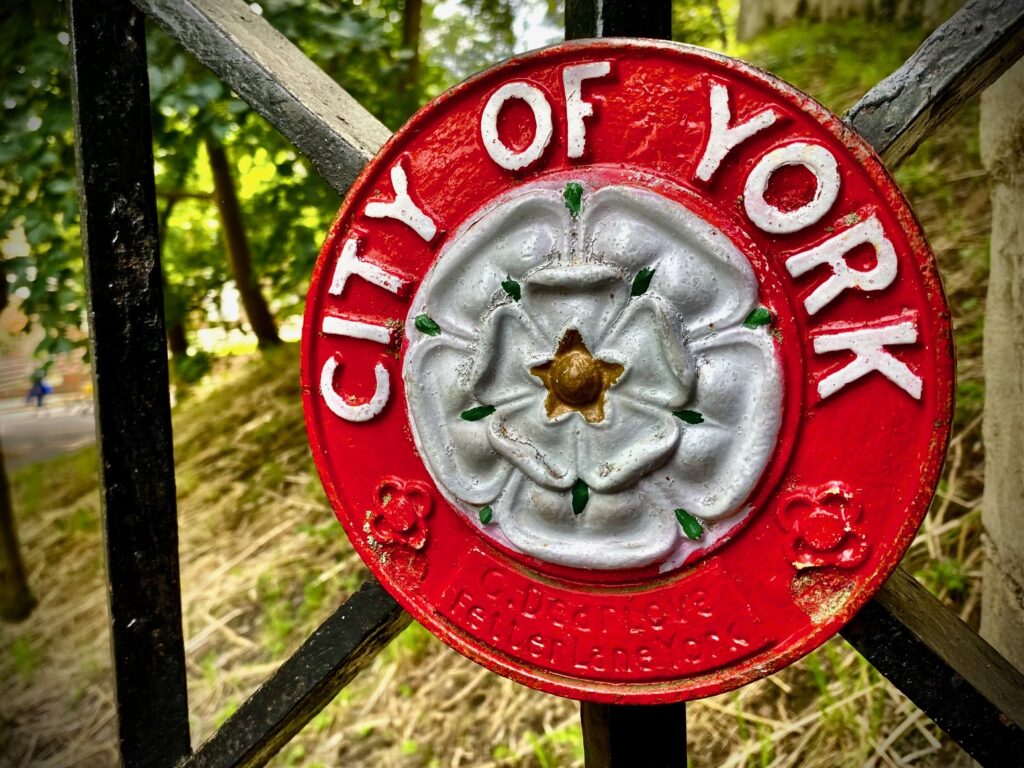
Parking in York
Navigating parking in York can be challenging for visitors and locals alike. With its rich historical significance and bustling modern life, York attracts numerous travellers every day. To ensure you have a smooth experience, this guide provides you with all the essential details about parking in York, from park-and-ride facilities to free car parks.
York’s Park and Ride System
One of the most efficient ways to park in York is to utilise the city’s park-and-ride system. Not only does it reduce traffic congestion within the city, but it also offers a cost-effective and eco-friendly alternative. Simply park your car in one of these designated lots on the outskirts and hop onto a shuttle bus that will take you straight to the heart of York. This service runs frequently and offers a hassle-free experience to visitors, reducing the need to navigate the busy city centre roads.
City Car Parks in York
For those who prefer parking closer to their destination, York has numerous city car parks, including:-
- Castle Car Park: Located near Clifford’s Tower, this car park is ideal for those visiting historic sites. Follow signs from the inner ring road.
- Marygate Car Park: Situated near the Museum Gardens and Bootham Bar, this is perfect for those wanting to stroll around the old city walls. Access it from the A19 Bootham.
- Barbican Car Park: Close to York Barbican and the city walls, this car park is convenient for event-goers.
It’s essential to note that these car parks tend to fill up quickly, especially during peak hours and holidays. Hence, it’s advised to arrive early or consider alternative parking solutions.
Free Car Parking in York
While rare, there are a few free parking spaces in York. However, they might require a bit of a walk to the city centre. Always check the parking signs to ensure that you’re parking in a free zone and not a resident-only area. Some community centres and shopping areas may offer limited-time free parking, so keep an eye out for such opportunities.
Alternative Transport to York
Considering the potential challenges of parking in York, visitors might find it more convenient to arrive by other means.
- By Train: York’s railway station connects the city to many major towns and cities. Arriving by train can save you the hassle of finding a parking spot.
- River Taxi: For a unique experience, consider taking a river taxi. It’s not only an environmentally-friendly mode of transport but also offers a scenic route to the city.
Parking In York: Conclusion
Parking in York requires a bit of planning. Whether you opt for the park-and-ride system, city car parks, or free parking, always be aware of peak hours and popular events that might affect availability. Alternatively, considering the train or river taxi might just make your visit all the more special. Safe travels!
If you are Travelling further afield you may like to see our article, Things to do in North Yorkshire


